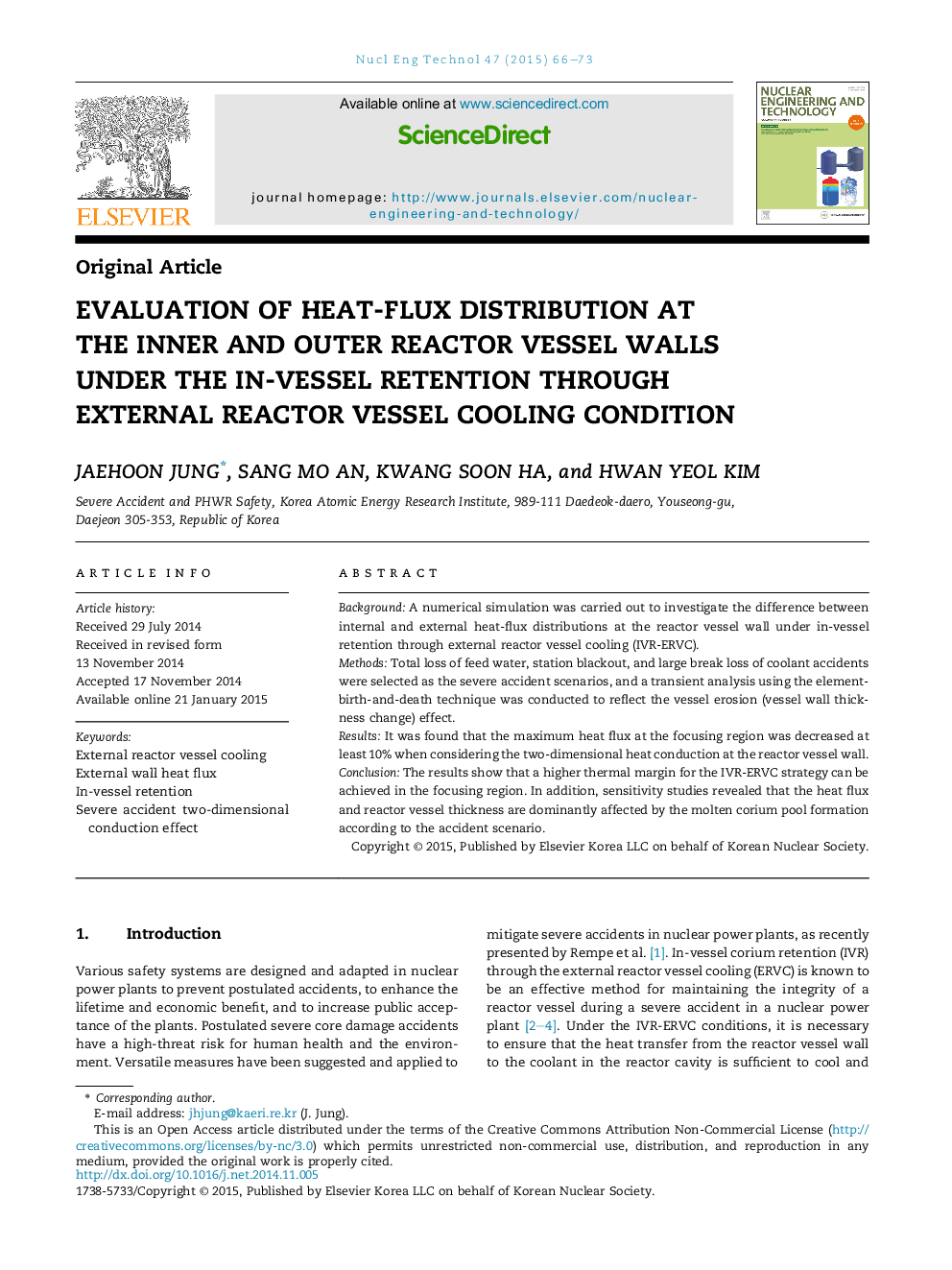| Article ID | Journal | Published Year | Pages | File Type |
|---|---|---|---|---|
| 1740191 | Nuclear Engineering and Technology | 2015 | 8 Pages |
BackgroundA numerical simulation was carried out to investigate the difference between internal and external heat-flux distributions at the reactor vessel wall under in-vessel retention through external reactor vessel cooling (IVR-ERVC).MethodsTotal loss of feed water, station blackout, and large break loss of coolant accidents were selected as the severe accident scenarios, and a transient analysis using the element-birth-and-death technique was conducted to reflect the vessel erosion (vessel wall thickness change) effect.ResultsIt was found that the maximum heat flux at the focusing region was decreased at least 10% when considering the two-dimensional heat conduction at the reactor vessel wall.ConclusionThe results show that a higher thermal margin for the IVR-ERVC strategy can be achieved in the focusing region. In addition, sensitivity studies revealed that the heat flux and reactor vessel thickness are dominantly affected by the molten corium pool formation according to the accident scenario.
